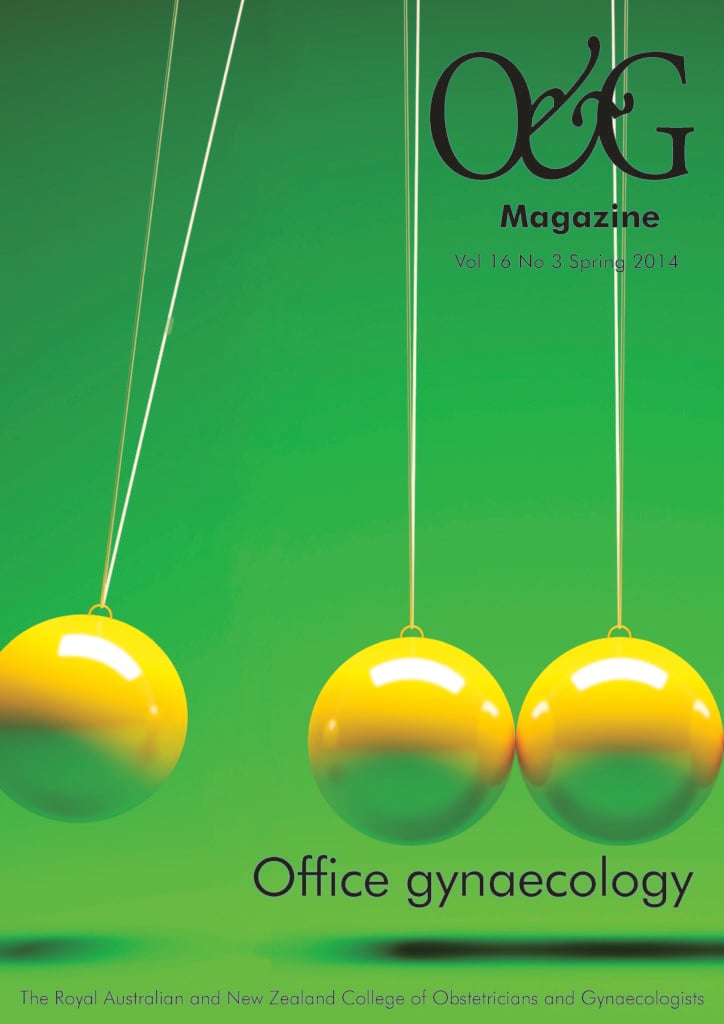Big changes are coming to cervical screening in Australia.
Pending policy approval, in 2016, it is anticipated that the cervical cancer screening test will transition from the two-yearly Pap smear for women aged 18–69, to a five-yearly human papilloma virus (HPV) test for women aged 25–74. An HPV test every five years is more effective, just as safe and saves more lives with fewer tests than the current program.
The Australian National Cervical Screening Program (NCSP) has been very successful. Since 1991, the incidence and mortality rates for cervical cancer have decreased by approximately 50 per cent, and are among the best in the world.
If we are doing so well, why change? The NCSP now operates in a markedly changed environment including:
- New knowledge about the natural history of cervical cancer.
- New evidence about the screening age range and interval.
- New tests such as liquid-based cytology (LBC) and HPV testing.
- The National Human Papilloma Virus (HPV) Vaccination Program commenced in 2007 for girls and 2013 for boys.
The Australian government commenced a ‘Renewal’ of the NCSP in late 2011, to ensure the continuing success of the program and that all Australian women, HPV vaccinated and unvaccinated, have access to a cervical screening program that is based on current evidence and best practice. After a rigorous and transparent process, the Australian Medical Services Advisory Committee (MSAC) considered the external Evidence and the Economic Modelling reports. Their recommendations were released on 28 April 2014:
- Five-yearly cervical screening using a primary HPV test with partial HPV genotyping and reflex LBC triage, for HPV vaccinated and unvaccinated women 25–69 years of age, with exit testing of women up to 74 years of age.
- Self-collection of an HPV sample, for an under-screened or never-screened woman, which has been facilitated by a medical or nurse practitioner (or on behalf of a medical practitioner) who also offers mainstream cervical screening.
- Invitations and reminders to be sent to women 25–69 years of age, and exit communications to be sent to women 70–74 years of age, to ensure the effectiveness of the program.
- Delisting of the existing cervical screening test MBS items over a six- to 12-month transition period.
What does this mean for health professionals and consumers?
- At least 15 per cent reduction in incidence and mortality from cervical cancer.
- A 20 per cent increase in colposcopy referrals, but no increase in treatments.
- Reduction in lifetime screening tests from 26 to nine or ten per woman.
- Women will still need a vaginal speculum examination to have a liquid-based sample taken from their cervix.
- Doctors will get a laboratory report giving HPV status, the result of reflex cytology where indicated and a single recommendation for action.
Changes to the NCSP will need careful communication and some potential concerns are discussed below.
Confidence in longer screening interval and new test
Women need to be confident that the new test is safe and effective. Numerous studies have demonstrated the increased sensitivity of the HPV test and that the likelihood of developing cervical cancer within five-to-six years of a negative HPV test is remote. A recent meta-analysis of four randomised controlled European trials of primary HPV testing has demonstrated 60–70 per cent greater protection against invasive cervical cancers than cytology, with improved prevention
of adenocarcinomas.
Later age of onset of screening (≥25 years)
Cervical cancer is rare in young women but HPV infection is very common and usually resolves without intervention. Detection of HPV-related cytologic abnormalities in younger women has led to unnecessary investigation and treatment of women who are very unlikely to progress to cancer. Screening of women under 25 years of age has not changed the incidence or mortality from cervical cancer in this age group. In addition, HPV vaccination will continue to cause a significant fall in the number of HSIL abnormalities in young women, making screening of young women less effective.
Self-collection for under- and never-screened women
It is distressing to note that 80 per cent of cervical cancer cases occur in women who are under or never screened. Aboriginal and Torres Strait Islander women have three-times the incidence rate for cervical cancer than non-Indigenous women (AIHW 2004–08). Indigenous women, particularly those from rural and remote communities, represent a significant proportion of the under or never screened. It is hoped that ‘self collection’ under the supervision of a health professional will improve screening participation in groups of under-screened women.
The Renewal process now moves into the implementation phase that features: the development of improved data systems, including a possible registry system with one record for each woman; safety and quality management programs; workforce and practice changes; and communication and information resources for health professionals and women.
Important: no changes to the program will occur before 2016. So, until then, it is business as usual with Pap smears every two years, from age 18–69 years.
Further information on the MSAC recommendations and Renewal is available at: www.msac.gov.au and www.cancerscreening.gov.au
Acknowledgement
The author would like to thank Dr Tracey Bessell, Screening Section, Cancer & Palliative Care Branch, Population Health Division, Department of Health, Australia, for her review and input in the preparation of this article.






Leave a Reply